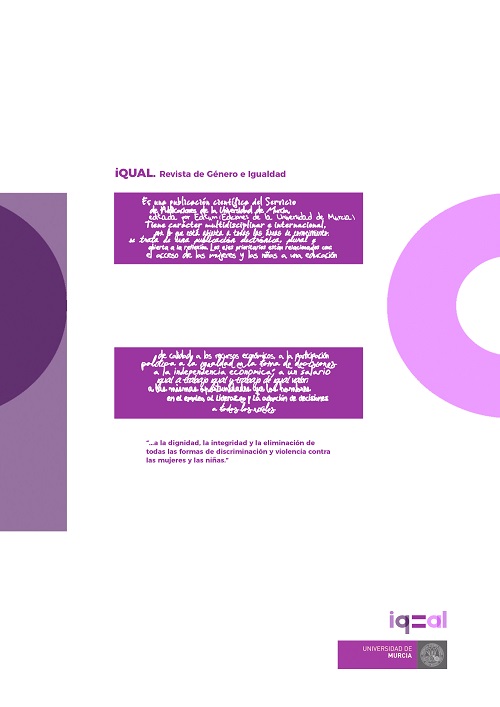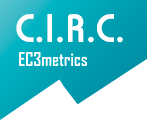Descriptive analysis of publications on violence in couple relationships Spanish adolescents schooled in education secondary school in recent years
Abstract
The main objective of this study is to analyse the existing scientific production in the Web of Science and Scopus databases on violence in adolescent intimate partner relationships in Spain, from 2015 to 2022. The final sample consisted of 25 documents from both databases. The study was carried out through a quantitative analysis of the selected publications. It concludes with the identification of a greater number of publications in the Web of Science database on this topic and a greater bibliographic production in the years 2020 and 2021. Violence in adolescent intimate partner relationships is a social and global health problem that requires research in order to deepen our knowledge and prevention. It is necessary to broaden the line of study on violence in adolescent relationships in Spain, since it is at this age when the way in which certain behaviours originating in relationships are interpreted will influence the way in which young people conceive their future relationships, their love for them and, more importantly, their love and respect for themselves.
Downloads
-
Abstract1167
-
Pdf (Español (España))390
References
Arias, E., Velasco, N., y Novo, M. (2016). Análisis bibliométrico sobre la investigación en violencia de género. Fundamentos y nuevas tendencias [Bibliometric analysis on intimate partner violence research. Basis and new trends].
Batiza, F. J. (2017). La violencia de pareja: Un enemigo silencioso. Archivos de Criminología, Seguridad Privada y Criminzalística, 18, 144–151.
Bundock, K., Chan, C., y Hewitt, O. (2020). Adolescents’ help-seeking behavior and intentions following adolescent dating violence: A systematic review. Trauma, Violence & Abuse, 21(2), 350–366. https://doi.org/10.1177/1524838018770412
Calvete, E., Fernández-González, L., Orue, I., y Little, T. D. (2018). Exposure to family violence and dating violence perpetration in adolescents: Potential cognitive and emotional mechanisms. Psychology of Violence, 8(1), 67–75. https://doi.org/10.1037/vio0000076
Calvete, E., Gámez-Guadix, M., Fernández-Gonzalez, L., Orue, I., y Borrajo, E. (2018). Maladaptive schemas as mediators of the relationship between previous victimizations in the family and dating violence victimization in adolescents. Child Abuse & Neglect, 81, 161–169. https://doi.org/10.1016/j.chiabu.2018.04.028
Cava, M-J., Buelga, S., y Tomás, I. (2021). Peer victimization and dating violence victimization: The mediating role of loneliness, depressed mood, and life satisfaction. Journal of Interpersonal Violence, 36(5–6), 2677–2702. https://doi.org/10.1177/0886260518760013
Cava, M-J., Tomás, I., Buelga, S., y Carrascosa, L. (2020). Loneliness, depressive mood and cyberbullying victimization in adolescent victims of cyber dating violence. International Journal of Environmental Research and Public Health, 17(12), 4269. https://doi.org/10.3390/ijerph17124269
Diaz-Aguado, M. J. (2005). Diez condiciones básicas para prevenir la violencia desde la adolescencia. Estudios de Juventud, 62.
Diaz-Aguado, M. J., Arias, M-R., y Martín-Barraro, M. (2013). El acoso entre adolescentes en España. Prevalencia, papeles adoptados por todo el grupo y características a las que atribuyen la victimización.
Duval, A., Lanning, B. A., y Patterson, M. S. (2020). A systematic review of dating violence risk factors among undergraduate college students. Trauma, Violence & Abuse, 21(3), 567–585. https://doi.org/10.1177/1524838018782207
Fundación Mutua Madrileña y la Fad. (2021). Barómetro Juvenil 2021. Salud y Bienestar Informe Sintético de Resultados.
Garrido, M. J., Arribas Rey, A., de Miguel, J. M., García-Collantes, Á., Guardía Civil, España, Universidad Autónoma de Madrid, España, & Universidad a Distancia de Madrid (UDIMA), España. (2020). La violencia en las relaciones de pareja de jóvenes: prevalencia, victimización, perpetración y bidireccionalidad. Revista Logos Ciencia & Tecnología, 12(2). https://doi.org/10.22335/rlct.v12i2.1168
Martínez, J. A., Vargas Gutiérrez, R., y Novoa Gómez, M. (2016). Relación entre la violencia en el noviazgo y observación de modelos parentales de maltrato. Psychologia, 10(1), 101–112. https://doi.org/10.21500/19002386.2470
Martínez-Heredia, N., González-Gijón, G., Soriano Díaz, A., y Amaro Agudo, A. (2021). Dating violence: A bibliometric review of the literature in Web of Science and Scopus. Social Sciences (Basel, Switzerland), 10(11), 445. https://doi.org/10.3390/socsci10110445
Merino, J. D. (2018). Violencia familiar en alumnos del cuarto año de secundaria en el área de EPT de la Institución Educativa Jose Abelardo Quiñones Gonzales Quebrada de Agua Montero Ayabaca-Piura 2018. https://repositorio.ucv.edu.pe/handle/20.500.12692/29819
Meza, J. A. D. (2017). Violencia en las relaciones de noviazgo: una revisión de estudios cualitativos. Apuntes de psicologia, 35(3), 179–186. https://www.apuntesdepsicologia.es/index.php/revista/article/view/692
Mohamed, L., Herrera Torres, L., y Carracedo Cortiñas, S. (2014). Violencia de pareja en jóvenes estudiantes universitarios de diferente origen cultural. DEDiCA Revista de Educação e Humanidades (Dreh), 5, 223–236. https://doi.org/10.30827/dreh.v0i5.7011
Molla-Esparza, C., López-González, E., y Losilla, J.-M. (2021). Sexting prevalence and Socio-demographic correlates in Spanish secondary school students. Sexuality Research & Social Policy: Journal of NSRC: SR & SP, 18(1), 97–111. https://doi.org/10.1007/s13178-020-00434-0
ONU. (2021). Paz, dignidad e igualdad en un planeta sano. https://www.un.org/es/
Organización Mundial de la Salud. (2016). Estrategia OMS de cooperación en los países. https://apps.who.int/iris/bitstream/handle/10665/253119/WHO-CCU-16.04-spa.pdf
Organización Mundial de la Salud. (2021). Violencia contra la mujer. https://www.who.int/es/news-room/fact-sheets/detail/violence-against-women
Ortiz, M. T., y López, D. A. (2011). Intimidad y las múltiples manifestaciones de la violencia doméstica entre mujeres lesbianas. Salud y Sociedad, 2.
Park, S., y Kim, S.-H. (2019). Who are the victims and who are the perpetrators in dating violence? Sharing the role of victim and perpetrator. Trauma, Violence & Abuse, 20(5), 732–741. https://doi.org/10.1177/1524838017730648
Rubio-Garay, F., Amor, P. J., y Carrasco, M. A. (2019). The contribution of moral disengagement to dating violence and general aggression: The gender and age moderating effects. The Spanish Journal of Psychology, 22(E59), E59. https://doi.org/10.1017/sjp.2019.57
Sánchez, V., Muñoz, N., y Ortega, J. (2018). Efficacy evaluation of “Dat-e Adolescence”: A dating violence prevention program in Spain. PloS One, 13(10), e0205802. https://doi.org/10.1371/journal.pone.0205802
Sanpedro, P. (2005). El mito del amor y sus consecuencias en los vínculos de pareja.
Soriano, A. (2011). La violencia en relaciones de pareja en estudiantes universitarios. Propuestas educativas. Pedagogia Social Revista Interuniversitaria, 18, 87. https://doi.org/10.7179/psri_2011.18.07
Sugg, N. (2015). Intimate partner violence: prevalence, health consequences, and intervention. The Medical Clinics of North America, 99(3), 629–649. https://doi.org/10.1016/j.mcna.2015.01.012
Tussey, B. E., y Tyler, K. A. (2019). Toward a comprehensive model of physical dating violence perpetration and victimization. Violence and Victims, 34(4), 661–677. https://doi.org/10.1891/0886-6708.VV-D-18-00130
Urrútia, G., y Bonfill, X. (2010). Declaración PRISMA: una propuesta para mejorar la publicación de revisiones sistemáticas y metaanálisis. Medicina clínica, 135(11), 507-511.
Yela, C. (2003). La otra cara del amor: Mitos, paradojas y problemas. Encuentros en Psicología Social.
Copyright (c) 2024 Servicio de Publicaciones Universidad de Murcia

This work is licensed under a Creative Commons Attribution-NonCommercial 4.0 International License.








